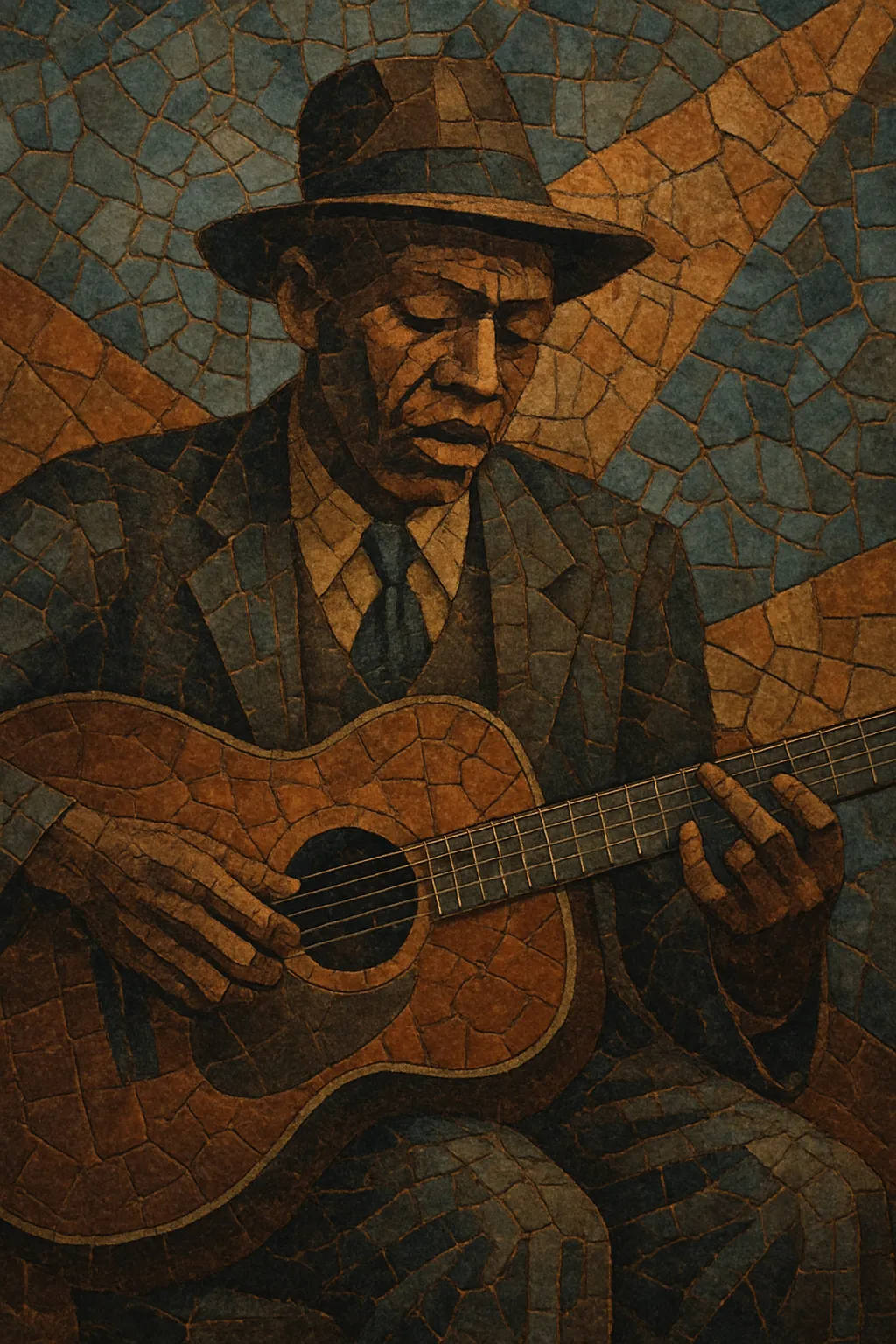
Delta blues is a raw, emotionally direct style of country blues that emerged in the Mississippi Delta—an alluvial plain stretching from Memphis to Vicksburg. It is typically performed by a solo singer accompanying themselves on acoustic guitar, often with bottleneck slide.
Hallmarks include expressive, speech-like vocals; flexible, rubato timing; insistent thumb-driven bass patterns; syncopated treble figures; and frequent use of open tunings. Lyrics are vivid and personal, touching on hardship, migration, love, work, spirituality, and folklore. Though commonly framed by 12‑bar and 8‑bar blues forms, Delta blues thrives on elastic phrasing, blue notes, and call-and-response between voice and guitar.
Its sound is earthy, gritty, and intimate—music for porches, juke joints, and field gatherings—yet it became one of the most influential sources for electric urban blues and rock.
Delta blues arose among African American communities in the Mississippi Delta, drawing on work songs, ring shouts, spirituals, and earlier folk-blues practices. Musicians adapted vocal melismas and call-and-response traditions to guitar, developing slide techniques and open tunings that mimicked the human voice. Performance contexts ranged from levee camps and plantation gatherings to Saturday-night juke joints.
The recording boom of the late 1920s brought Delta artists to regional studios and makeshift field sessions. Pioneers like Charley Patton, Son House, Skip James, Tommy Johnson, and later Robert Johnson defined the style on record, shaping the now-classic vocabulary of monotonic bass thump, keening slide, haunting modal inflections, and AAB lyrical forms. These discs circulated widely through mail-order catalogs and itinerant record dealers, spreading the Delta sound far beyond its birthplace.
The Great Migration carried Delta musicians north to urban centers such as Chicago. There, figures like Muddy Waters transformed acoustic Delta idioms into amplified band settings, retaining the vocal grit and slide vocabulary while adding drums, harmonica, and electric guitar. This jump-started Chicago blues and, in turn, rhythm & blues and early rock and roll.
The 1960s folk and blues revival brought renewed attention to surviving Delta masters and inspired British and American musicians. Delta repertory fueled British blues and the electric blues-rock explosion, while collectors and scholars documented field histories and tunings. Today, the Delta canon remains foundational, studied by guitarists worldwide and referenced across blues, rock, Americana, and roots music.

